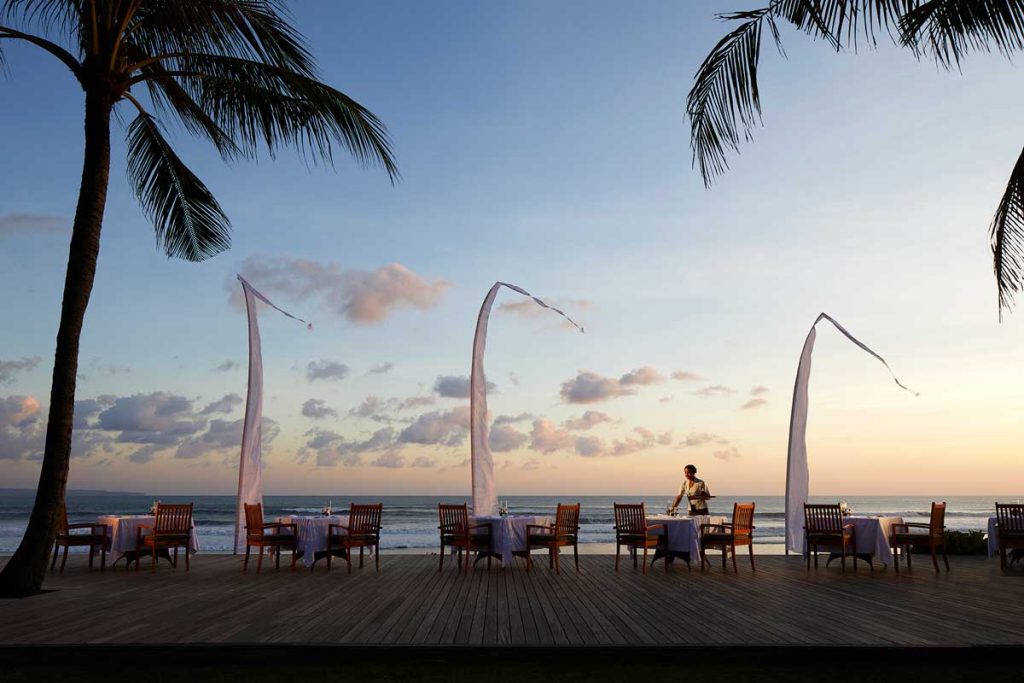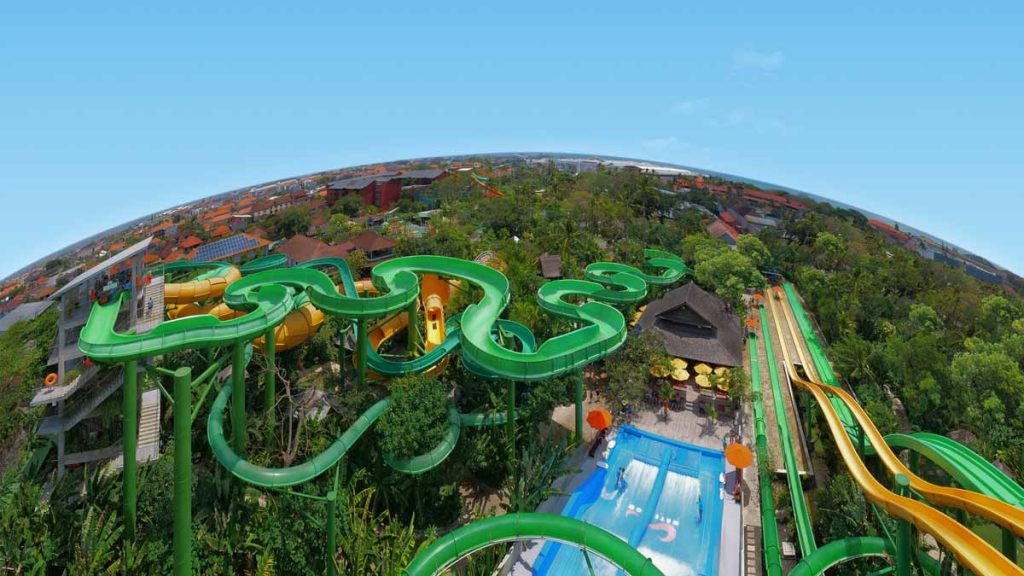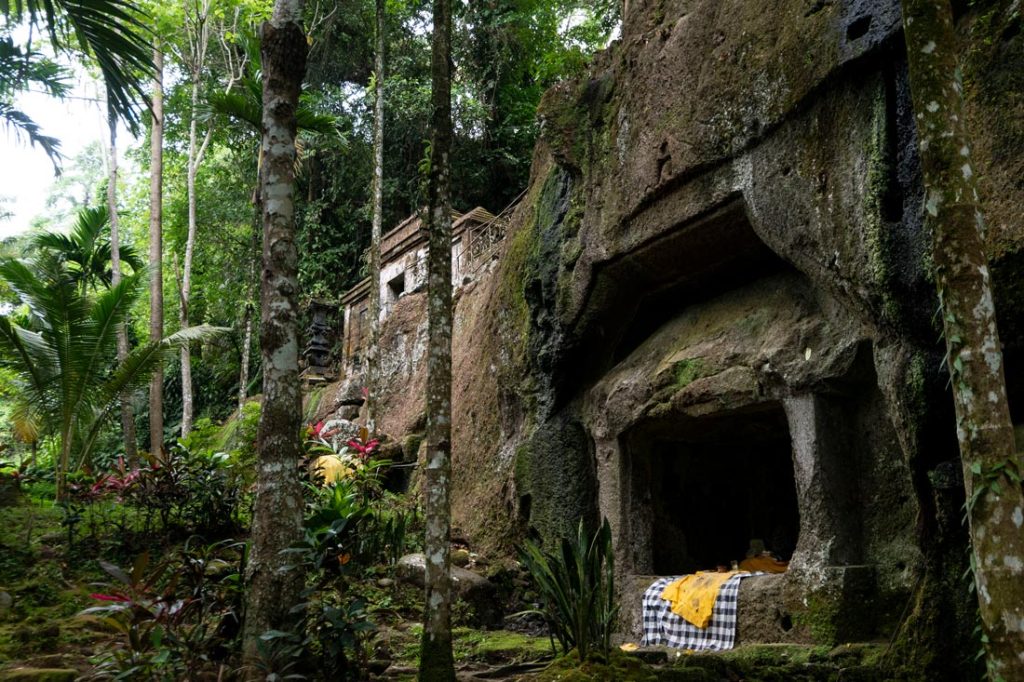
Bali’s archaeological monuments are shrouded in mystery; ancient shrines and tombs carved into rock faces, and many reclaimed by nature over the centuries. One such site is Goa Garba, or Garba Cave, a meditation enclave on the banks of the Pakerisan River around Tampaksiring. The site’s history is tied to that of Kebo Iwa, a leader and warrior of Balinese legend.
Prior to the arrival of the Majapahit Kingdom in 1343, Bali was ruled by the Bedahulu Kingdom. Many megalithic remnants of the island are from this period of time, a kingship that lasted between the 8th and 14th centuries. Ruling from Pejeng, a region of Gianyar northeast of current day Ubud, many of the historical sites are found between the ‘parallel rivers’ of Pakerisan and Petanu, including Pura Tirtha Empul, Goa Gajah (Elephant Cave), Yeh Pulu bas-reliefs and the rock-cut shrines of Gunung Kawi.
The ancient Goa Garba is a lesser-known treasure of this ancient past, located around 10-minutes drive from the more famous Goa Gajah. This solitary destination sits deep in the ravine, skirting the flowing waters of the Pakerisan River. The sound of insects shrilling and the rush of the river rapids set the scene of this jungled enclave. The air is thick and a heavy bubble of quiet seems to encase the serene surroundings.
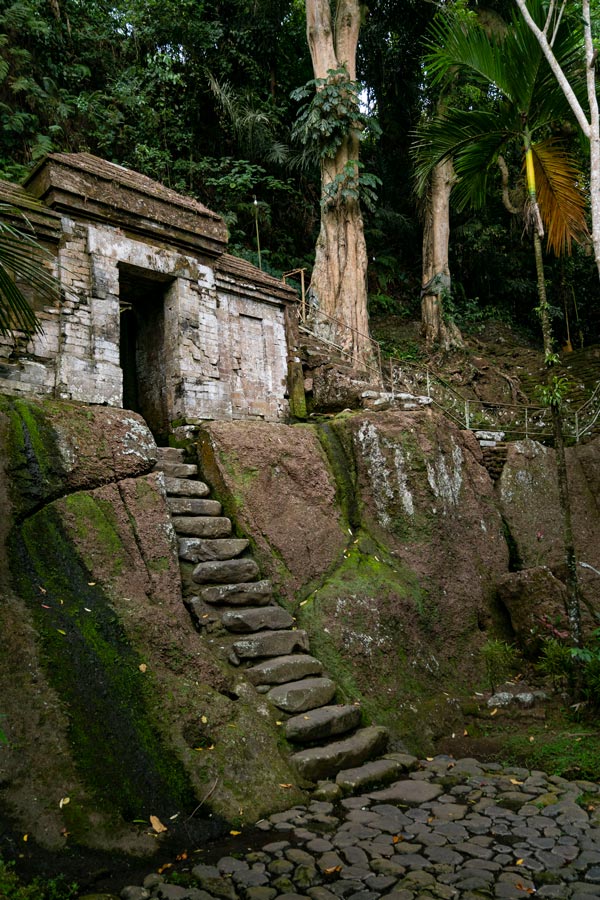
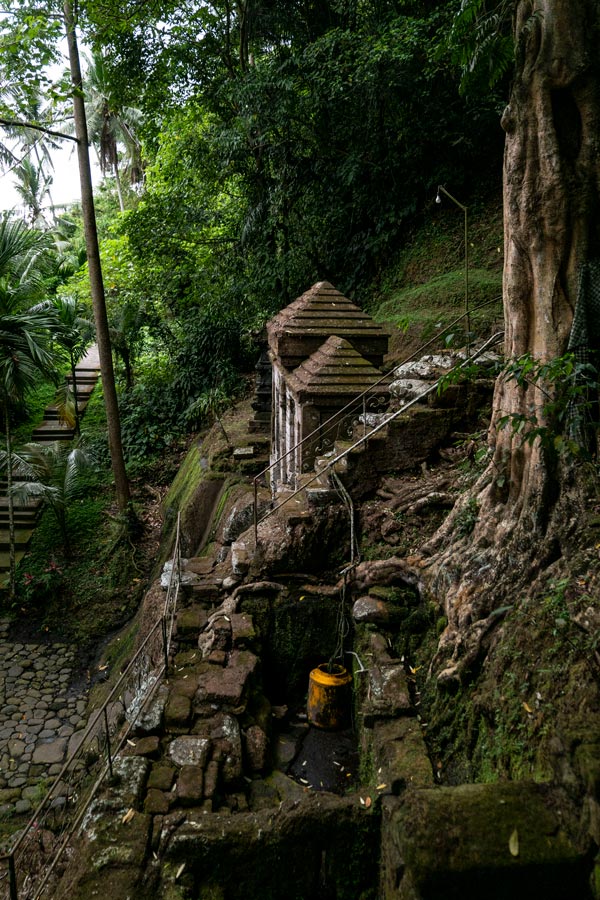
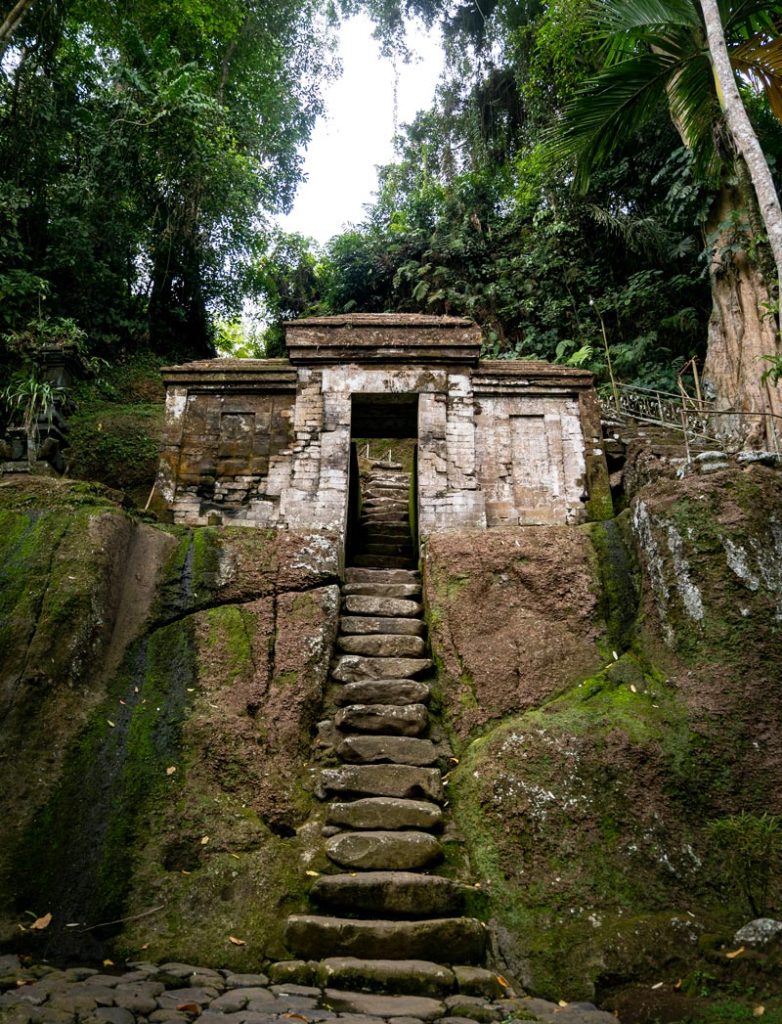
Upon entering the site, what stands out first is a striking gateway, an imposing structure that stands high on the raised, stone embankment. Running through the centre of the gateway is a steep and narrow stairway with each step made of a great stone boulder at least 50cm in height. Further down, two niches have been carved neatly out of the stone embankment. Similar to those found at Gunung Kawi, the niches were once used for meditation. Inside of the first niche, stone artefacts are found. Atop the embankment sit two pools where holy waters flow, used for cleansing rituals (melukat), and a small hole in the ground leads to a cave from which the site gets its name (goa meaning cave, garba meaning deep underground), perhaps once used for isolated meditation.
Climbing up the stone steps takes one to Pura Pengukur-ukuran, a temple whose name teases some of Goa Garba’s history. According to ancient inscriptions, Goa Garba was built around 1196 (or 1116 on the Saka calendar), during the reign of King Jayapangus. It was said to be used as a place of spiritual learning for young princes and princesses of the era.
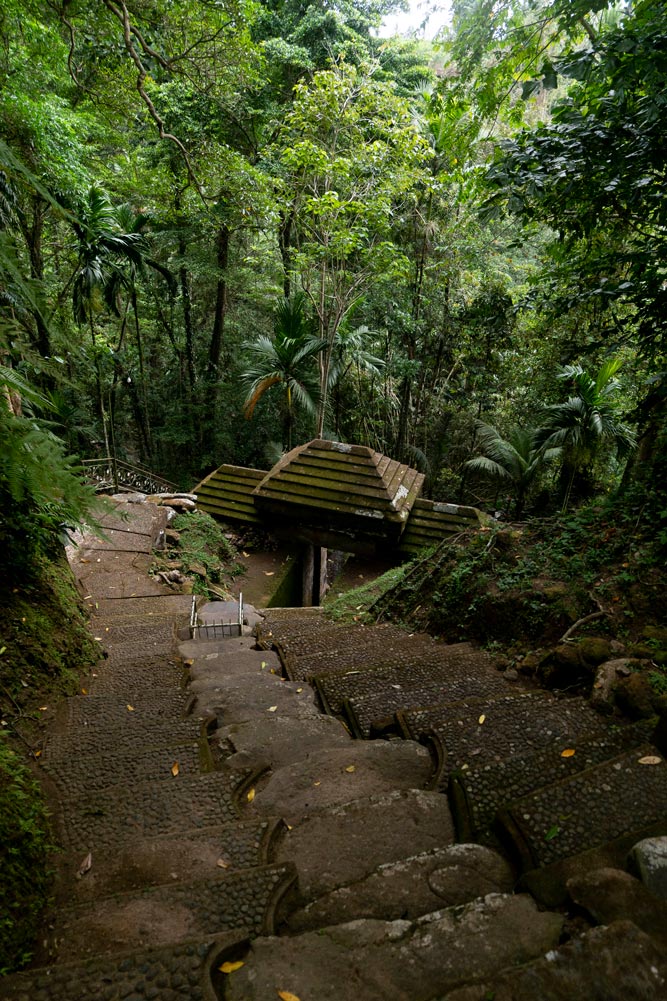
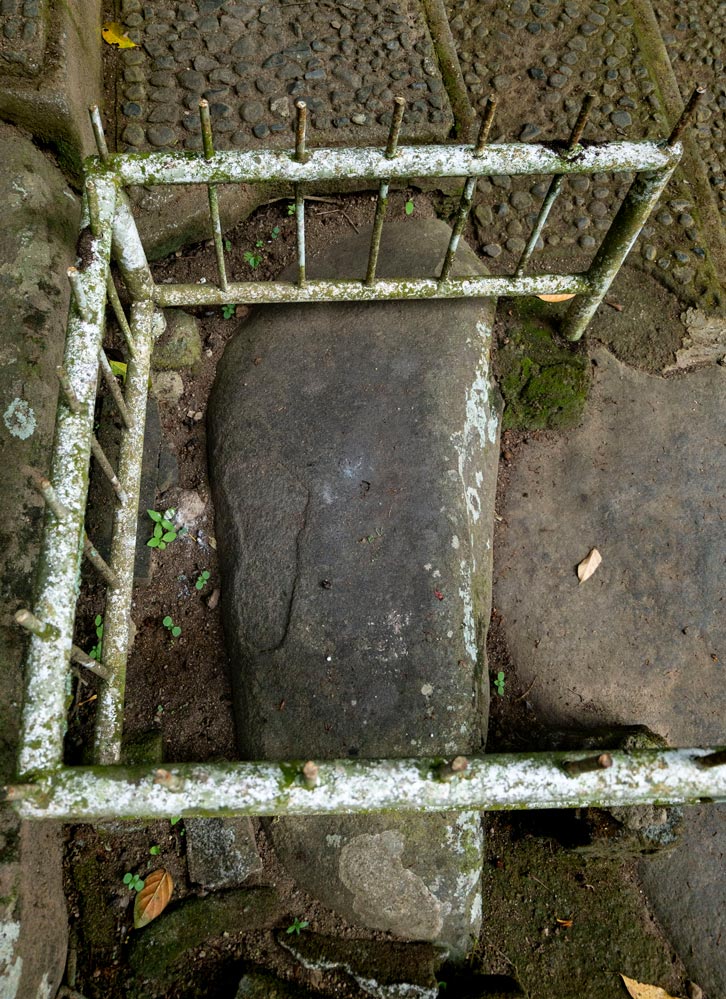
Of course, legend always finds its way into Balinese history. The temple’s name, pengukur-ukuran, means ‘measurement’, and many believe that this was where Kebo Iwa (also known as Kebo Teruna) was ‘tested’ before he was made Prime Minister, or Mahapatih of the kingdom. Kebo Iwa was rumoured to be blessed with extraordinary strength and even superhuman powers. Thus, the area beneath the temple became his testing grounds where the warrior faced trials that challenged his spirit, strength and perseverance. He passed each and every task and earned his title as Prime Minister.
It was said that one of the trials was laying the enormous stone steps that lead from the river bank up to the temple. If this wasn’t proof enough of his abilities, one of the stones shows an imprint of a foot, said to be the warrior’s own when he stamped it to secure the step in place.
For those interested in the monuments of Bali’s ancient past, Goa Garba is certainly one to visit. Entrance fees range from IDR 20.000 to IDR 30.000, a sarong must be worn upon visiting.

